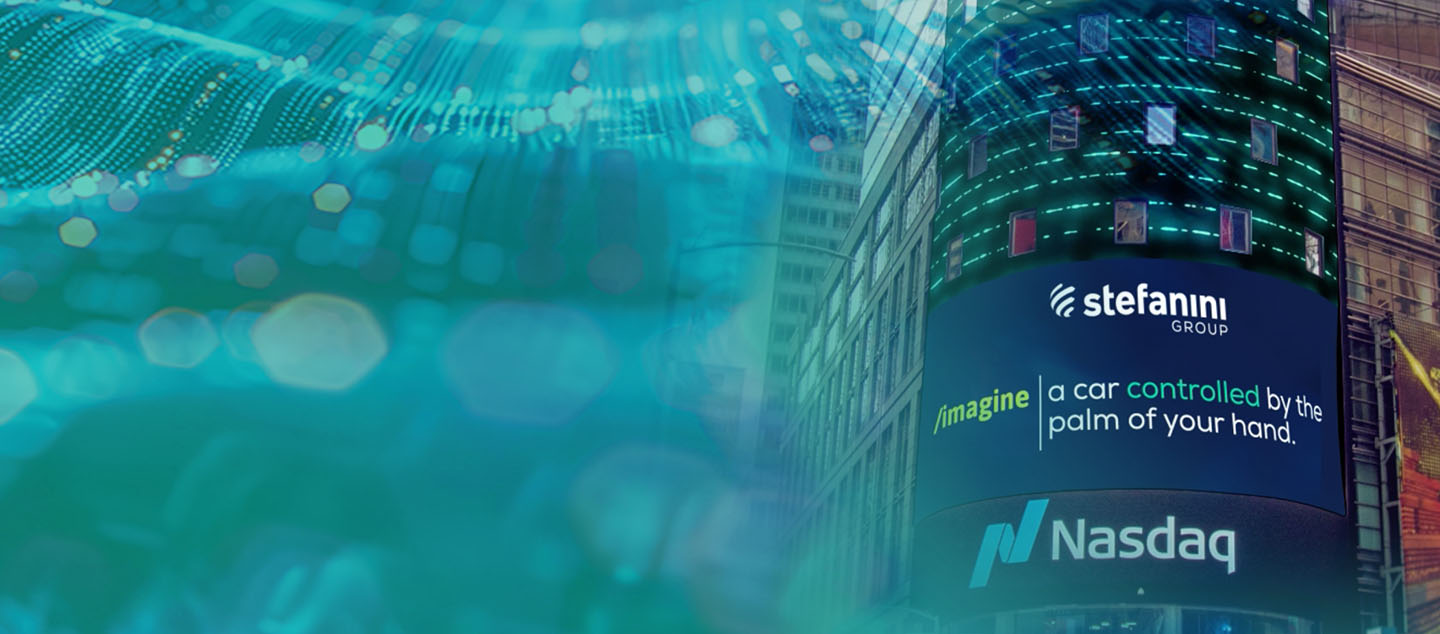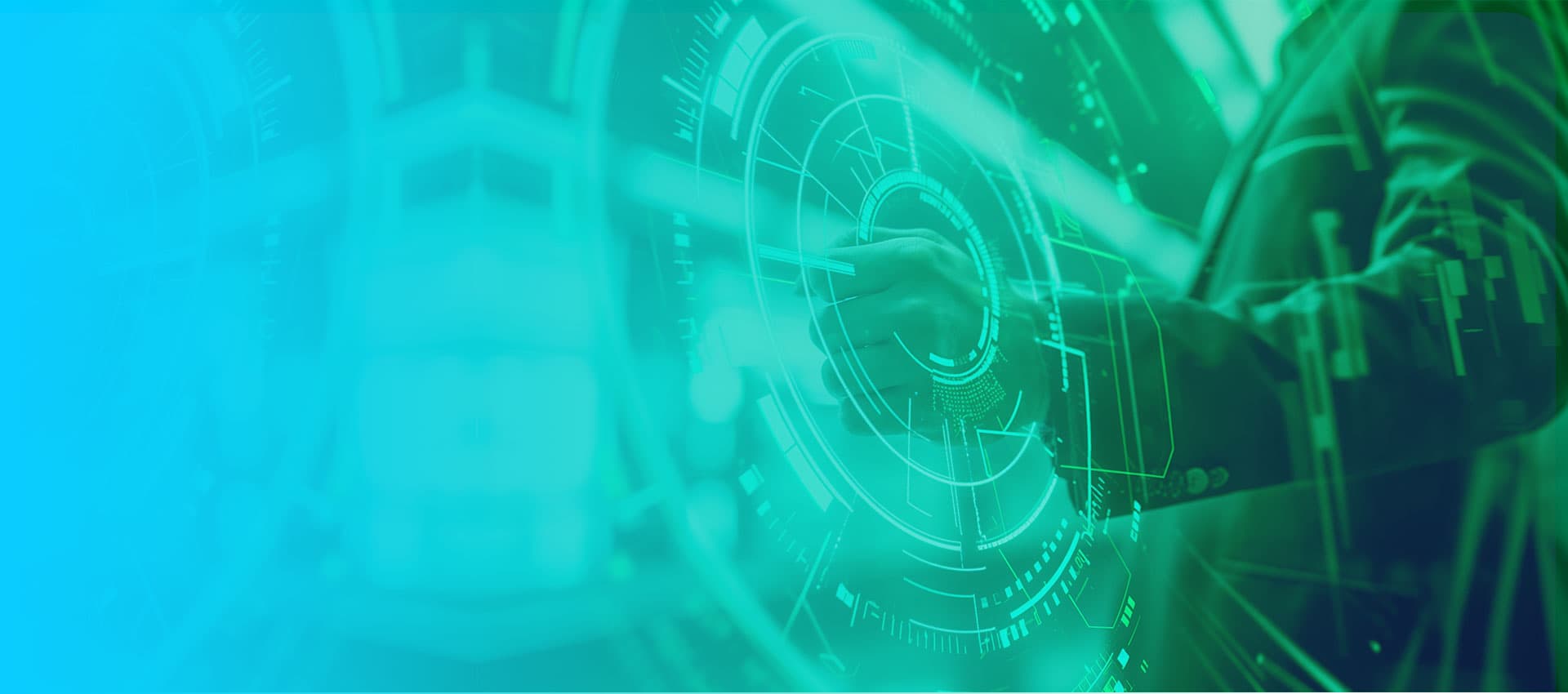Machine learning, artificial intelligence (AI), and robotics are three interconnected fields transforming the world around us. Their synergy enables the development of intelligent, adaptable, and autonomous machines that can perform a wider range of tasks than ever before.
Machine learning algorithms are being used to improve the performance of robots, AI is being used to develop new robotic control systems, and robots are being used to collect data that can then be used to train machine learning algorithms. This virtuous circle is driving rapid advancements in all three disciplines.
To understand the ways machine learning, AI, and robotics are shaping the future of digital advancements, let’s first undertake a short review the disciplines involved and the areas of robotic processing that enable robots to perform complex tasks and improve their performance over time.
Artificial Intelligence
Artificial intelligence (AI) is a field of computer science focused on creating intelligent systems (robots) that can reason, learn, and act autonomously. AI algorithms can be used to control robots’ movements, make decisions about how to achieve their goals, and adapt to changing circumstances.
Machine Learning
Machine learning is a branch of artificial intelligence that enables systems to learn from data without being explicitly programmed. Machine learning algorithms can analyze large datasets and identify patterns, allowing robots to make predictions or decisions without human intervention. This enables robots to learn from their interactions with the environment and improve their performance over time.
Robotics
Robotics is the field of engineering that deals with the design, construction, operation, and application of robots. Robots can collect data from their interactions with the environment, which can then be used to train machine learning algorithms and improve AI systems. This creates a feedback loop that can accelerate the development of both machine learning and AI.
4 Areas of robotic processing
The four areas of robotic processing are vision, grasping, motion control, and data-driven learning. These four interrelated areas rely on machine learning and AI to function.
Vision
Machine learning enables robots to see and understand their surroundings. By analyzing images and videos from cameras, robots can identify objects, track their movements, and make decisions based on visual information.
Grasping
Machine learning allows robots to grasp and manipulate objects with precision and dexterity. By analyzing the shape, size, and texture of objects, robots can determine the best way to grasp them and avoid dropping or damaging them.
Motion control
Machine learning helps robots move smoothly and efficiently. By analyzing sensor data and predicting the effects of their actions, robots can avoid obstacles, maintain balance, and perform complex tasks with precision.
Data-driven learning
Machine learning enables robots to learn from data without being explicitly programmed. By analyzing large datasets, robots can identify patterns and make predictions, allowing them to improve their performance over time.
Revolutionary: The Impact of Machine Learning and AI on Robotics
The synergy between machine learning, AI, and robotics is driving innovation and leading to the development of robots that can learn from data and improve their performance over time, make intelligent decisions based on real-time information, navigate complex environments autonomously, perform tasks with greater precision and dexterity, and work alongside humans safely and effectively. As the interplay between machine learning, AI, and robotics continues to evolve, we can expect to see transformative applications with the potential to revolutionize industries, improve our quality of life, and shape the future of work and society.
Enhanced Robotics Capabilities
AI plays a crucial role in enabling robots to make intelligent decisions based on real-time information and complex simulations. AI algorithms process data from a range of inputs to understand the current state of the environment, predict future events, and make decisions about how to achieve the robot’s goals.
Machine learning algorithms enable robots to learn from data and adapt to dynamic environments. These algorithms allow robots to identify patterns, make predictions, and improve their performance over time, making them more versatile and effective in a wide range of applications.
Robots equipped with machine learning algorithms can analyze vast amounts of data from sensors, cameras, and other sources to learn about their surroundings and how to interact with them. By analyzing data like images, videos, sensor reading, and human feedback, robots can identify patterns and relationships that would be difficult or impossible for humans to detect.
For example, a robot that is tasked with delivering packages to customers can use AI and machine learning algorithms to plan a route based on real-time and/or historical traffic data while identifying and avoiding potential hazards, such as pedestrians and cyclists.
The combination of machine learning and AI is enabling robots to perform increasingly complex tasks such as:
- Object recognition and manipulation: Robots can now identify and interact with objects in their environment with greater precision and dexterity.
- Autonomous navigation and obstacle avoidance: Robots can navigate complex environments autonomously, avoiding obstacles and adapting to unexpected changes.
- Human-robot collaboration: Robots can work alongside humans safely and effectively, collaborating on tasks and sharing information.
- Predictive maintenance and self-learning: Robots can predict and prevent equipment failures, and they can continuously improve their performance without human intervention.
Autonomous Navigation and Obstacle Avoidance
Machine learning and artificial intelligence (AI) enable real-time obstacle detection and avoidance in robotics, which in turn allows for autonomous navigation. Real-time obstacle detection and avoidance is a critical aspect of autonomous navigation for robots, as it ensures the safety and efficiency of robots (and the humans around them) as they navigate complex and dynamic environments.
Robots gather vast amounts of data about their surroundings. Machine learning algorithms analyze this data to create a detailed map of the environment. Based on the environmental map and real-time sensor data, machine learning algorithms can then generate optimal paths for the robot to follow.
As robots navigate, they continuously collect new data and update their environmental models, allowing them to respond to changes in the environment. Robots must continuously monitor their surroundings and adapt their movements accordingly.
Machine learning algorithms process real time sensor data to distinguish between static obstacles, such as walls and furniture, and dynamic obstacles, such as moving vehicles or pedestrians. Once obstacles are detected, machine learning algorithms can generate avoidance strategies such as adjusting the robot’s path, slowing down, or even stopping to avoid collisions.
Preventing collisions is paramount for the safety of both the robot and its surroundings. Real-time obstacle detection and avoidance makes robots more adaptable to various settings, minimizes the risk of accidents and damage, and ensures that robots don’t waste time or energy re-planning routes.
Object Recognition and Manipulation
Machine learning algorithms enable robots to recognize and interact with objects in their surroundings with unprecedented precision and dexterity.
Object recognition is the fundamental ability of robots to perceive and identify objects in their environment. Machine learning algorithms analyze data from sensors to extract relevant features like shape, color, texture, and spatial arrangement from objects.
After analyzing the extracted features, machine learning algorithms match them against a database of known objects or patterns, allowing robots to identify and categorize objects based on their characteristics. As robots encounter new objects or variations of existing objects, they can update their knowledge base and refine their recognition models.
Object recognition is only the first step. Machine learning algorithms also enable robots to manipulate objects in a meaningful way, such as grasping, moving, and assembling them. These algorithms can analyze the shape and pose of objects to determine the most effective grasp strategies. Surface properties and object fragility are also considered to ensure safe and secure manipulation.
Once a grasp strategy is determined, machine learning algorithms can plan and execute the robot’s movements to achieve the desired manipulation task, coordinating the robot’s arms, hands, and fingers to achieve precise and controlled movements.
Machine learning enables robots to adapt their manipulation strategies to unexpected changes or disturbances through continuous monitoring of the manipulation process. Robots can then adjust their movements accordingly to maintain control and prevent errors.
Applications in Manufacturing and Logistics
Robotic object recognition and manipulation have introduced automation and efficiency to various tasks in manufacturing and logistics such as:
- Automated Pick and Place: Robots equipped with object recognition and manipulation capabilities can automate repetitive tasks such as picking items from shelves and placing them in designated locations.
- Assembly and Quality Control: Machine learning algorithms enable robots to perform complex assembly tasks, precisely positioning and joining components. They can also inspect products for defects and ensure quality standards are met.
- Packaging and Palletization: Robots can recognize and manipulate various packaging materials, such as boxes, bottles, and containers. They can automate packaging tasks and efficiently palletize goods for shipping.
- Inventory Management: Robots can scan and identify products in inventory, facilitating real-time tracking and management. They can also assist in restocking and organizing inventory to ensure optimal logistics operations.
Human-Robot Collaboration
Collaborative robots, also known as cobots, are a new generation of robots designed to work safely and cooperatively with humans in shared workspaces. Unlike traditional industrial robots that are typically isolated from human interaction for safety reasons, cobots are specifically designed to operate alongside humans, sharing tasks and enhancing productivity. Cobots are safer, easier to use, and more versatile than traditional industrial robots.
Machine learning and AI play a crucial role in facilitating human-robot collaboration, enabling cobots to learn from human interactions and adapt to their surroundings. Machine learning algorithms can analyze human gestures, voice commands, and even facial expressions to understand human intent and predict their actions, allowing cobots to anticipate human movements and respond accordingly.
Cobots can learn from human demonstrations, adapt their behaviors to complement human workers, and refine their task execution strategies over time. They can divide tasks effectively, taking on repetitive or hazardous tasks while humans focus on higher-level cognitive functions.
Predictive Maintenance and Self Learning
Machine learning algorithms enable predictive maintenance by analyzing sensor data to identify patterns and anomalies that might indicate potential equipment failures. Integrated sensors continuously collect data about the robot’s operation, providing a rich source of information about its health and performance. Machine learning algorithms analyze this data in real-time or over time to identify trends and patterns.
By analyzing historical data and current sensor readings, machine learning algorithms can predict potential failures before they occur, preventing downtime and costly repairs. Machine learning algorithms can also help identify the root cause of equipment failures, providing valuable insights for improving design, manufacturing, and maintenance procedures.
Self-learning is the capability of robots to continuously learn from their experiences and improve their performance without explicit programming. Self-learning robots can adapt their behavior to changing environments and task requirements. By analyzing performance data, self-learning robots can identify areas for improvement and optimize their task execution strategies. Self-learning robots can acquire new skills through interaction with their surroundings and trial-and-error. They can learn from successful trials and avoid repeating mistakes, leading to continuous performance improvement.
Real-World Applications and Examples
Machine learning and AI technologies are significantly impacting various sectors. Some of the sectors that are benefiting most from these advancements include:
1. Healthcare
Machine learning and AI are transforming healthcare by enabling more accurate diagnosis, personalized treatment plans, and the development of new drugs and therapies. AI-powered algorithms can analyze medical images, patient data, and genetic information to identify patterns and make predictions that can improve patient care. For instance, AI is being used to detect cancer cells in medical images with greater accuracy than human experts, enabling early detection and intervention.
2. Finance
Machine learning and AI are revolutionizing the financial industry by automating tasks such as fraud detection, risk assessment, and investment management. AI algorithms can analyze large amounts of financial data to identify patterns and make predictions that can help financial institutions make better decisions. For example, AI is being used to detect fraudulent transactions in real-time, preventing financial losses and protecting consumers.
3. Retail
Machine learning and AI are transforming the retail industry by enabling personalized product recommendations, dynamic pricing, and automated customer service. AI algorithms can analyze customer behavior, purchase history, and demographic data to provide personalized product recommendations and optimize pricing strategies. For instance, AI-powered recommendation engines are being used to suggest products to customers based on their past purchases and browsing behavior, increasing sales and customer satisfaction.
4. Transportation
Machine learning and AI are revolutionizing the transportation industry by enabling autonomous vehicles, intelligent traffic management, and optimized logistics planning. AI algorithms can analyze sensor data, road conditions, and traffic patterns to make real-time decisions that can improve transportation efficiency and safety. For example, AI is being used to develop self-driving cars that can navigate roads, avoid obstacles, and make decisions with human-level intelligence.
5. Manufacturing
Machine learning and AI are transforming the manufacturing industry by enabling predictive maintenance, automated quality control, and robotics-powered assembly. AI algorithms can analyze sensor data from manufacturing equipment to predict potential failures, preventing downtime and improving productivity. For instance, AI-powered predictive maintenance systems are being used to identify and address equipment issues before they cause breakdowns, reducing production costs and increasing overall output.
Future Vision: Advancements in machine learning and AI
It’s difficult to pinpoint a single most exciting development in the vast and rapidly evolving fields of robotics and artificial intelligence (AI), as numerous advancements are continuously pushing the boundaries of what’s possible. However, a few key areas stand out for their transformative potential and the promise they hold for shaping the future of these technologies.
Deep Learning
Deep learning, a subset of machine learning, utilizes artificial neural networks to enable robots to perform tasks that were previously considered too complex for machines, such as image and video recognition and natural language processing. These neural networks are inspired by the structure and function of the human brain.
Reinforcement learning
Reinforcement learning (RL) is a type of machine learning that enables robots to learn by interacting with their environment and receiving rewards or penalties for their actions. Unlike traditional machine learning algorithms that are trained on labeled data, RL agents learn through trial and error, exploring different actions and observing the resulting outcomes.
Explainable AI
The ability to understand and explain the decision-making processes of AI systems is crucial for building trust and ensuring their responsible application. Advancements in explainable AI techniques, such as interpretable models and counterfactual explanations, enable humans to better understand the inner workings of AI systems, making them more transparent and accountable.
Lifelong Learning
The ability of robots and AI systems to continuously learn and adapt throughout their lifespan is essential for their real-world applicability. Research in lifelong learning is focused on developing AI systems that can learn from their experiences, improve their performance over time, and adapt to new situations and environments without the need for explicit retraining.
Emergent Behaviors
The emergence of complex and unexpected behaviors from the interaction of simple AI agents is a fascinating area of research with potential applications in areas such as swarm robotics and decentralized control systems. Understanding the principles of emergent behavior could lead to the development of AI systems capable of self-organization, adaptation, and collective intelligence.
Neuromorphic Computing
The development of hardware and software systems that mimic the structure and function of the human brain is a promising approach to achieving artificial general intelligence (AGI). Neuromorphic computing, also known as brain-inspired computing, aims to create AI systems that can learn, adapt, and process information in a similar way to the human brain, holding the potential for breakthroughs in areas such as pattern recognition, decision-making, and creative problem-solving.
Artificial general intelligence (AGI)
Artificial general intelligence (AGI), also known as strong AI, full AI, or human-level AI, is a hypothetical type of artificial intelligence with the ability to understand and reason at the same level as a human being. The development of AGI is one of the most important challenges facing artificial intelligence research today. There is no consensus on how to achieve AGI, and there is no guarantee that it will ever be possible. An AGI would be able to perform any intellectual task that a human can, and it would be capable of learning and adapting to new situations without explicit programming.
Interconnected fields, transforming the world around us
Machine learning and artificial intelligence (AI) have revolutionized the field of robotics, just as robotics is poised to revolutionize the digital landscape, driving efficiency, enhancing productivity, and expanding the possibilities of automation and intelligent machine capabilities.
Robots are becoming increasingly sophisticated, capable of performing complex tasks, adapting to dynamic environments, and collaborating seamlessly with humans. Expect to see robots in more and more industries, performing a wider range of tasks, and collaborating with humans in new and innovative ways. The future of robotics is bright, filled with potential to improve our lives, solve complex problems, and shape the world around us in ways we can only begin to imagine.
Interested in integrating machine learning, AI, and robotics into your business operations? Say hi.



















